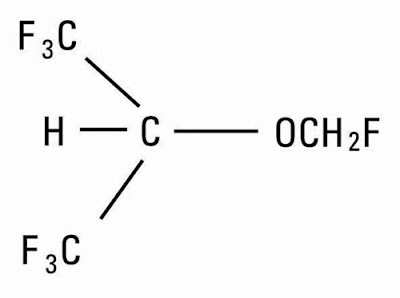Ultrasonic Non Destructive Testing Euipment: Enhancing Quality Control through Innovation
 |
| Ultrasonic Non Destructive Testing Euipment |
Non-destructive
testing (NDT) techniques have played a pivotal role in upholding quality
standards across various industries by detecting internal and external flaws in
components without damaging them. Within the vast arena of NDT methods,
ultrasonic testing has emerged as one of the primary tools due to its
widespread applications and continual technological advancements.
Principles of Ultrasonic Testing
Ultrasonic testing is based on the principle that ultrasonic waves propagate
through a material at a particular velocity depending on its physical
properties. When the wave encounters a change in material properties like
cracks, defects or material interfaces, a portion of the wave energy gets
reflected back. Highly sensitive piezoelectric transducers are used to transmit
and receive ultrasonic pulses in the frequency range of 0.1 MHz to 25 MHz. By
analyzing the amplitude and time-of-flight of these reflections, crucial
parameters like size, shape and orientation of flaws can be determined.
Early Equipment and Techniques
The foundation of Ultrasonic Non-Destructive Testing
Equipment was laid in the late 1920s with the demonstration of
ultrasonic wave propagation through materials. However, it was only after World
War 2 that significant advancements in piezoelectric materials and electronics
propelled the large-scale industrial and research applications of ultrasonics.
Early ultrasonic flaw detectors comprised of stand-alone units with
single-element transducers that performed basic pulse-echo and through
transmission testing. Techniques like angle beam scanning and corrosion mapping
were introduced to address diverse needs of the oil, gas and aerospace
industries which drove further enhancements in transducers and testing
protocols.
Advancements in Transducer Design and
Array Technology
Transducer design underwent revolutionary changes with the advent of phased
array technology in the 1980s. Phased arrays packed tens to hundreds of
individual transducer elements within an active aperture that could perform
electronic steering and focusing of ultrasonic beams without mechanically
moving the probe. This enabled drastic improvements in inspection coverage,
throughput and reliable flaw detection in complex component geometries.
Additional advancements like linear phased arrays, matrix phased arrays and 2D
array transducers have tremendously expanded the capabilities for pipe
inspection, corrosion monitoring, composite inspection and more. Cutting-edge
transducer technologies incorporating multiple focal laws, plane wave imaging
and high-frequency operation are driving new frontiers in NDT.
Digital Revolution and Array Systems
The era of digital electronics and computing fundamentally changed the
landscape of ultrasonics. Early digital pulse-echo systems with basic A-scans
were superseded by next-generation multi-channel ultrasonic pulser-receiver
systems. Integrated with advance array technologies, these high-performance
systems could manage hundreds of parallel receive channels and implement sophisticated
DAC/ADC modules for high fidelity data acquisition. Sophisticated delay-and-sum
beamforming algorithms allowed electronic scanning and reconstruction of 2D/3D
ultrasonic images in real-time. Modern automated array systems encompass
integrated phased array probes, multi-channel pulsers-receivers, high-speed
digital signal processors and intuitive operator workstations for field
portable or in-plant deployment. Major equipment manufacturers actively pursue
open architecture-based platforms suited for customized array applications.
Applications across Industries
Ultrasonic testing finds extensive use in various industrial sectors due to its
non-intrusive, cost-effective and highly sensitive nature. Some of the key
applications are:
- Welding Inspection: Post-weld inspection for defects in pipeline girth, butt
and fillet welds using straight beam/phased array techniques.
- Pressure Vessels & Storage Tanks: Crucial for detecting wall thinning,
laminations and contour mapping.
- Nuclear Industry: Critical for monitoring radioactive material containers and
inspection of reactor pressure vessels and components.
- Composite Material Evaluation: Plane wave and angle beam testing for ply
defects, cracks and disbonds in CFRP, GFRP structures.
- Alloy Steel Forgings: Identifying subsurface defects in critical components
like crankshafts, gears and axles.
- Oil & Gas Transportation: Mechanical array systems facilitate intensive
inspection of transmission pipelines for circumferential and longitudinal flaws.
Future Scope and Advance Research
Manufacturers are actively pursuing AI-based NDT technologies integrating deep
learning, data analytics and high-performance computing capabilities. Novel
techniques combining advanced digital arrays with guided waves, laser
ultrasonics and electromagnetics are being explored. Miniaturized robotic
crawlers and flyability concepts hold promise for internal defect
characterization of complex hollow components. Additive manufacturing
approaches for integrated smart sensor platforms are another emerging area.
With untapped potential across industries, continued research coupled with
innovative engineering will cement ultrasonics as the mainstay of reliable
nondestructive materials evaluation.
Get More Insights on this Topic- https://www.trendingwebwire.com/ultrasonic-non-destructive-testing-equipment-refers-to-a-wide-group-of-analysis-techniques-used-in-science-and-industry/



Comments
Post a Comment